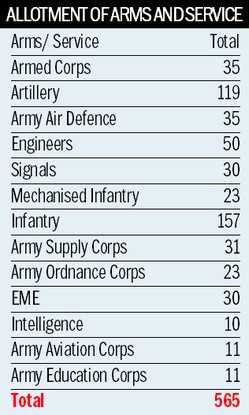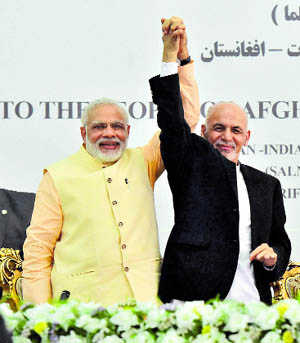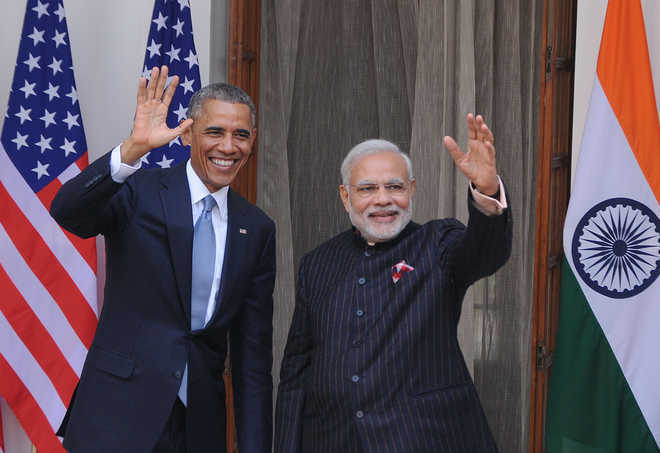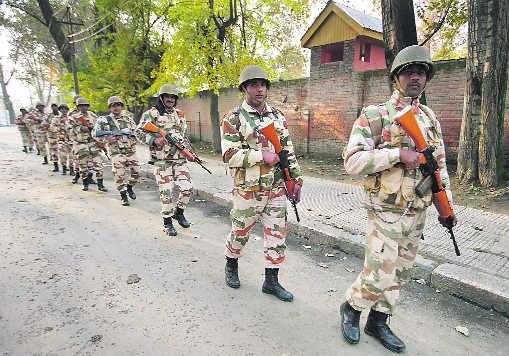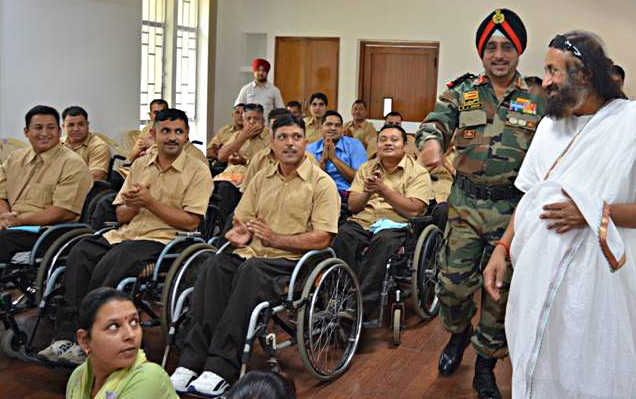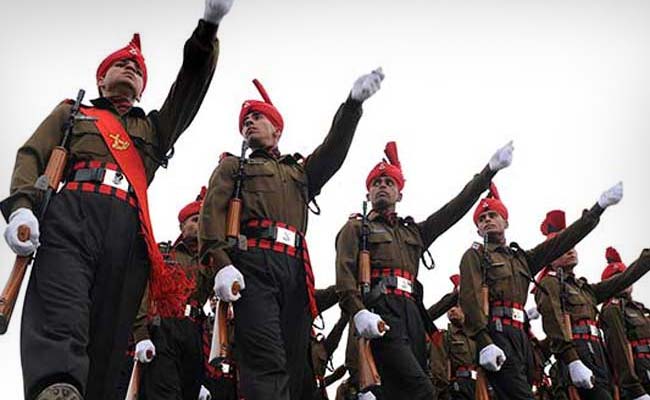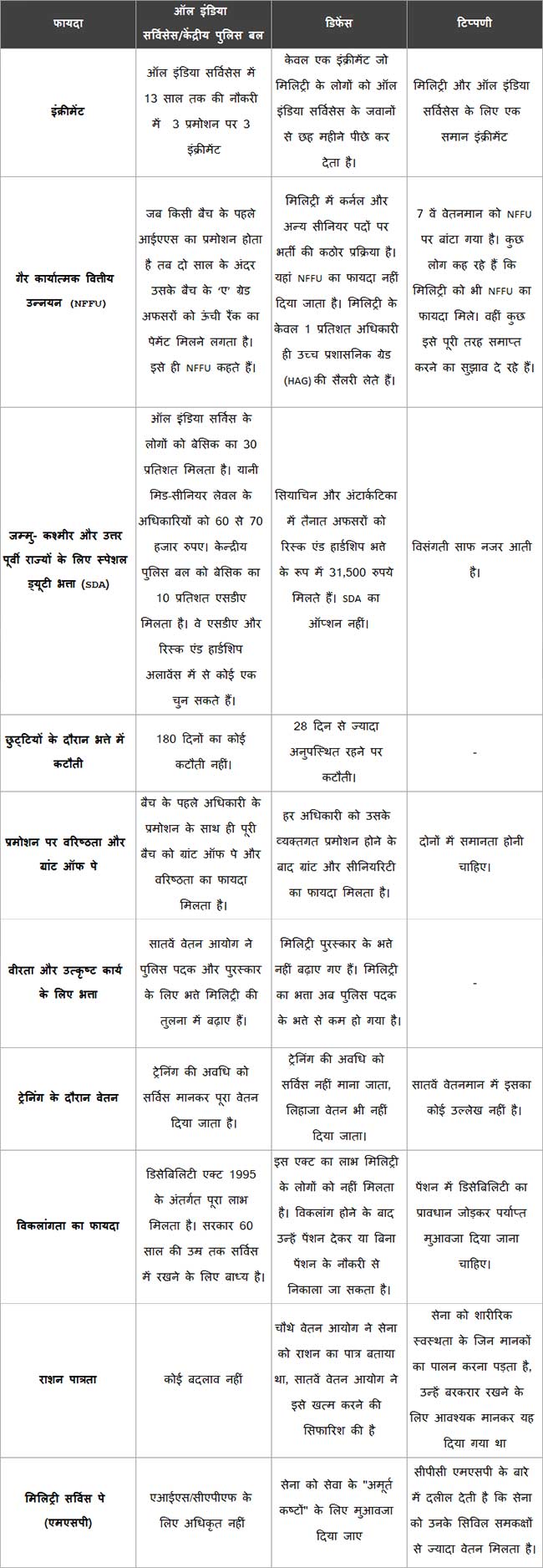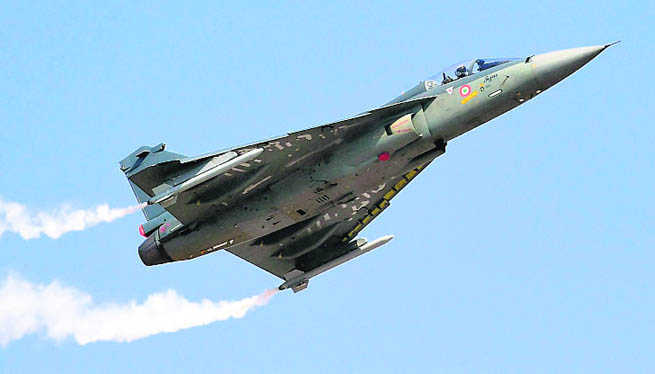 India’s indigenous Light Combat Aircraft, the Tejas
India’s indigenous Light Combat Aircraft, the TejasNew Delhi, June 16
After a wait of over three decades, the IAF will finally get its hands on the first squadron of indigenous Tejas next month with the delivery of the fourth Light Combat Aircraft.However, the first squadron will be made of up of just four Tejas aircraft, in stark contrast to at least 16 aircraft that usually makes up for one squadron globally.State-run Hindustan Aeronautics Limited, manufacturer of Tejas, will hand over the fourth aircraft to the Air Force on July 1.The four aircraft will be used for training and familarisation.Rather than waiting for LAC Mk II, IAF had decided to go in with an upgraded version of the existing Tejas with over 40 modifications.IAF currently plans to acquire 120 Tejas aircraft, with 100 of these having major modifications.The force wants Active Electrically Scanned Array (AESA) Radar, Unified Electronic Warfare (EW) Suite, mid-air refuelling capacity and beyond the vision range missiles.As per the production plan, six aircraft will be made this year (2015-16) and HAL will subsequently scale it up to eight and 16 aircraft per year. — PTI
IAF to get 1st squadron of Tejas in July
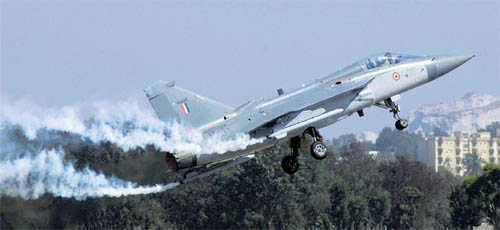
A file photo of the Tejas aircraft performing during the inauguration of the Aero India at Yelhanka air base in Bengaluru. PTI
New Delhi, June 16
The Indian Air Force will finally get its hands on the first squadron of indigenous Tejas next month with the delivery of the fourth Light Combat Aircraft after a wait of more than three decades.
However, the first squadron will be made of up of just four Tejas aircraft, in stark contrast to at least 16 aircraft that usually makes up for one squadron globally.
State-run Hindustan Aeronautics Limited, manufacturer of Tejas, will hand over the fourth aircraft to the Air Force on July 1.
The four aircraft will be used for training and familarisation.
Rather than waiting for LAC Mk II, IAF had decided to go in with an upgraded version of the existing Tejas with over 40 modifications.
IAF currently plans to acquire 120 Tejas aircraft, with 100 of these having major modifications.
The force wants Active Electrically Scanned Array (AESA) Radar, Unified Electronic Warfare (EW) Suite, mid-air refuelling capacity and beyond the vision range missiles.
According to the production plan, six aircraft will be made this year (2015-16) and HAL will subsequently scale it up to eight and 16 aircraft per year. — PTI
VVIP chopper deal: Michel was eager about Sea King payments

The verdict of an Italian court that found former heads of Finmeccanica guilty of misdealings changed the course of investigations into the Rs 3,600 crore AgustaWestland deal. File photo
New Delhi, June 16
British national Christian Michel James — the suspected middleman who has been accused of having been involved the alleged corruption in the Rs 3,600 crore chopper deal — was “keenly interested” in details about certain government payments made to AgustaWestland for Sea King helicopters used by the Indian Navy, a report by the Enforcement Directorate has said.
The ED — which has filed a second charge sheet in which it delves deep into the role of Michel — also said that he was curious if “certain documents” had reached the Central Bureau of Investigation (CBI).
According to the report, Michel was last dropped by his driver Narayan Bahadur on February 12, 2013, at the Indira Gandhi International airport after which he probably never returned to India.
The charge sheet mentions Michel’s numerous visits and meetings with people in Delhi when the deal for supply of 12 AgusatWestland helicopters to the IAF was struck. It also refers to an incident that took place few years back in a hotel in Italy.
The report mentioned that Michel had offered about Euro 2,500 to a person Vimal Nagpal, Manager, of the helicopter firm’s services division in India, to “offer lunch/dinner” to a Navy team that was also staying in the same hotel that time.
“The Indian Navy team declined the offer for lunch/dinner by him (Nagpal) and Chris Cornish. However, we insisted and paid the dinner bill once,” Nagpal said in his statement to the ED.
He also told ED investigators that Michel “wanted to know details” of payments made by the Indian Government to AgustaWestland pertaining to Sea King helicopter and status of the VVIP choppers and other issues.
“On one such occasion, Michel wanted to check with him (Nagpal) whether the documents — approximately 9,500 pages of them —were delivered to the CBI,” the charge sheet said, adding Nagpal told him he would have to find out.
The records also mention an instance recorded by Bahadur in which he claimed that Sanjeev Tyagi — cousin of former IAF chief SP Tyagi — received three of Michel’s “friends” at a bungalow in the posh Sainik farm area in 2008 after the middleman asked him to pick them from a luxury hotel in central Delhi.
The driver — whose statements have been used extensively to help trace Michel’s activities in India — also told investigators that the middleman once gave him Rs 5 lakh for purchasing a house that cost Rs 16 lakh in the Kalkaji area, where he also lives now. The driver had to pay the remaining sum.
According to, the charge sheet said, an embassy of an African country functions at the bungalow currently.
Nagpal had also told ED that Bahadur had once delivered him cash amounts sent by Michel as AgustaWestland had proposed to IAF to have “six-axis full flight simulators for training pilots on regular basis” for the AW-101 VVIP choppers.
He also told ED that Michel had assured him that he will get “approvals from higher officials of AgustaWestland” to allocate the simulator project to a chosen firm in India.
However, the plan never worked out as IAF “did not” approve the simulator programme.
The 1,300 page charge sheet of the ED was placed before a special Prevention of Money Laundering Act (PMLA) court here last week.
The agency accuses Michel of having received around Euro 30 million (about Rs 225 crore) from AgustaWestland as “kickbacks” paid by the firm for sale of 12 helicopters to India in favour of the firm.
The court is expected to soon take cognisance of the supplementary charge sheet.
Apart from Michel, the agency has named Ms Media Exim Private Limited and its directors, RK Nanda and J B Subramaniyam in the charge sheet. The firm was created by Michel along with the two individuals.
Michel is one of the three middlemen being probed in the case, apart from Guido Haschke and Carlo Gerosa, by the ED and the CBI. Both the agencies have asked for an Interpol red notice after the court issued a non-bailable warrant against him.
A red notice is issued “to seek the location and arrest of wanted persons with a view to extradition or similar lawful action” in a criminal investigation. — PTI

